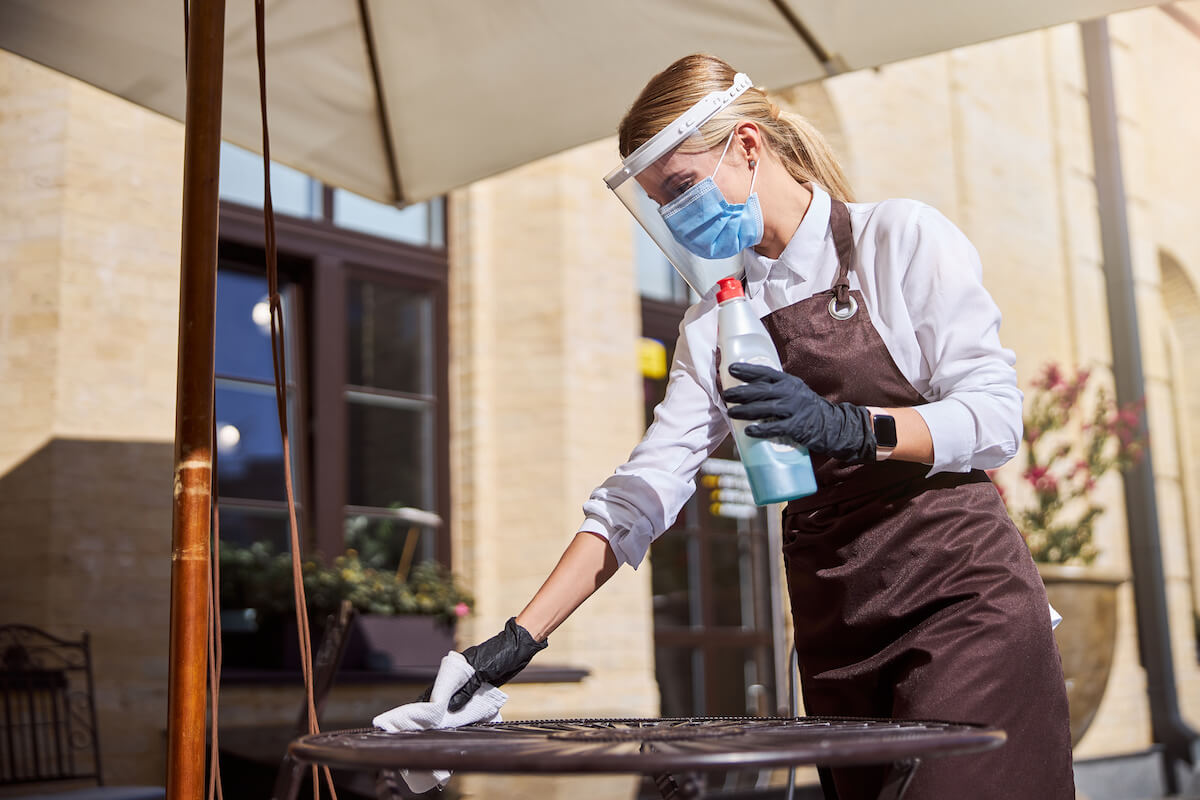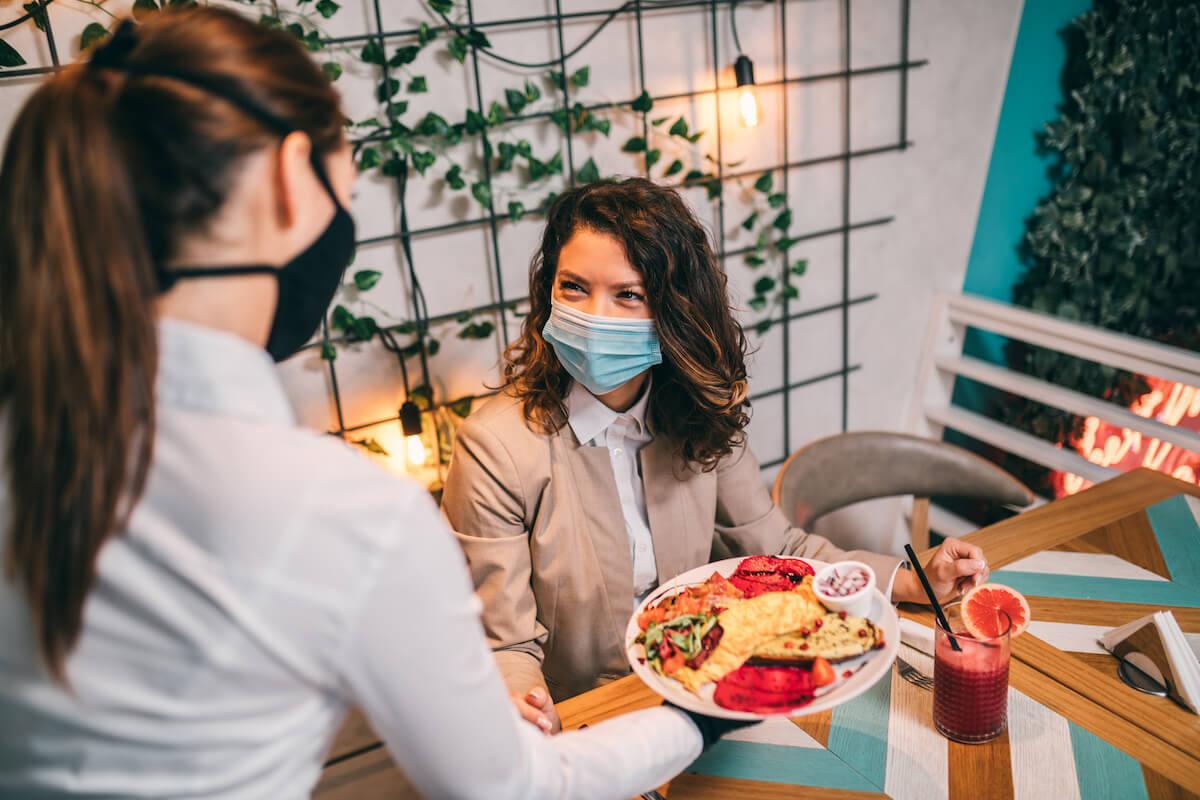How to create COVID dining policies that balance staff and customer needs
The coronavirus pandemic has made a dramatic impact on the restaurant industry. Surging cases of COVID in 2020 led to executive orders that shut down in-person dining, whereby restaurants from San Francisco to New York City had to rely on delivery and curbside pickup to stay in business. Dining out resumed when health experts from the Centers for Disease Control and Prevention (CDC) allowed for restaurant reopenings to take place. Starting with outdoor dining only, then gradually shifting to include indoor restaurant dining, small business owners soon found themselves facing a new problem that continues to this day: COVID dining policies.
Telling customers to practice physical distancing and avoid close contact, wash hands and use hand sanitizer, and present a negative COVID test or proof of vaccination is easier said than done. Likewise, hiring and managing staff in high-risk front-of-house positions, accommodating sick leave, enforcing mask mandates, and requiring COVID-19 vaccines for co-workers can also present myriad challenges.
Ultimately, controlling infectious disease outbreaks is a shared responsibility. Communicating public health best practices in a tasteful manner should allow for a sense of balance between business needs and COVID safety.
Here’s how you can handle COVID safety measures in your restaurant with both employees and customers.
The ongoing conundrum between restaurants and COVID

As new information around COVID-19 is uncovered, the CDC continues to issue evolving public health guidelines. As you craft your own policy, use the most current CDC guidelines as the foundation, then follow local and state guidelines in place.
The Food and Drug Administration (FDA) and Occupational Safety and Health Administration (OSHA) shape their guidelines around the CDC. Rules around face coverings, social distancing, physical barriers and protective equipment, capacity limits, and allowances for vaccinated people vs. unvaccinated people have changed significantly. It’s admittedly hard for customers to keep up with so much misinformation being shared across social media, so be ready for customers to possibly need some verbal reminders as they dine with you.
Vaccines have made a game-changing impact on the pandemic, but varying rules around requiring vaccines for employees and customers are a variable that owners must consider for their COVID dining policies. The contagious delta variant has further complicated the restaurant and COVID ecosystem by bringing about a new wave of outbreaks, threatening dining room closures if cases continue to rise.
Further variants are expected in the future, and inevitably new COVID dining policies will need to be enacted per CDC guidelines. For restaurant owners, it’s important to communicate your COVID dining policies clearly and consistently.
Clearly communicate your COVID dining policies

The easiest way to manage your COVID dining policies is online, where customers looking for your restaurant can manage expectations before they set foot through your doors. Whether you’re a food truck or a full-service establishment, be sure to publish customer policies around vaccines and masks on your website and social media accounts, updating them as needed. For staff, be sure to communicate your dining policies in writing via email and text message, as well as in any job descriptions for potential new hires.
As an added layer of proactive security, post signage outside your entryway that outlines your COVID dining policies. Setting expectations on-site can minimize potential for complications with customers. Likewise, for employees, post signage in your back-of-house and other high-traffic areas to remind staff of your rules.
Consider these COVID dining policies for customers
Here are a few things to require for customers to help minimize the spread of COVID-19:
- Require proof of vaccination. Vaccines are the best way to reduce serious healthcare concerns surrounding COVID-19, for other guests and staff alike. You may be most comfortable requiring proof of vaccination or a negative COVID-19 test before customers dine indoors with you.
- Wear a mask. Do so when entering, exiting, and moving around the restaurant to minimize potentially spreading COVID-19. While not required in many areas, the CDC recommends that customers still wear masks.
- Stay home if you’re sick. Request that customers avoid dining with you, even in outdoor settings, if they’re feeling sick or exhibiting symptoms of illness such as coughing or sneezing. They can utilize your delivery service instead.
Consider these COVID dining policies for staff
The CDC recommends that restaurants take the following COVID precautions with employees:
- Get vaccinated.
- Practice strong hand hygiene with frequent hand washing for at least 20 seconds at a time, especially for those who touch surfaces shared by guests.
- Wear masks at all times on the job. Whether in the dining room or the bar area, restaurants present high-risk environments since social distancing is naturally difficult. Staff should also avoid touching their face once their mask is on.
- Make use of protective equipment such as hand sanitizer, masks, and disinfecting equipment, which you should readily provide.
Have a firm stance on vaccination status

All science has pointed to vaccines as a crucial factor to defeating the coronavirus pandemic. More and more worksites are mandating that employees get vaccinated. Many small businesses are requiring customers to show proof of vaccination, and even wear a face mask regardless of vaccination status.
With the restaurant industry recovering from last year’s closures while facing a labor shortage, every customer and team member goes a long way. This makes it hard to say no to a potential diner or new hire, but establishing a firm stance on how you will handle unvaccinated people beforehand will make those decisions much easier.
Serving unvaccinated customers
Refusing to serve an unvaccinated customer could result in a heated argument that requires management to step in. Here’s how to enforce your vaccination policy while causing minimal disruption in your dining room:
- Stay calm. If the customer raises their voice, maintain a neutral tone.
- Reference your posted signage, as well as CDC and public health guidelines. Explaining that the rules are coming from a higher power relieves you from being blamed personally.
- Take the conversation outside and away from other customers, to avoid any continued disruption in your dining room.
- If the customer refuses to cooperate, enforce your right to refuse service. If the customer refuses to leave, call the authorities.
In cases that involve children too young to be vaccinated, kindly ask parents to have those children wear masks anytime they’re not actively eating or drinking, as well as anytime they leave their table.
Managing unvaccinated workers
Some team members may not want to get vaccinated for a variety of reasons. Here are a few ways that restaurant owners are balancing staffing their restaurants and COVID vaccination guidelines:
- Make unvaccinated workers get tested regularly at their own expense.
- Require unvaccinated workers to wear N95 masks for extra protection.
- Communicate that any infraction of your posted policies will result in immediate termination.
With a staffing shortage, it may be difficult to replace an otherwise high-performing staff member, so it’s up to you to determine policies around unvaccinated staff before the time comes to enforce them.
Safely serve the customers at your restaurant
Preventing the spread of COVID-19 and breakthrough infections, reducing hospitalizations, and minimizing risk around the contagious delta variant are responsibilities shouldered by business owners worldwide. When running a food service, where maintaining high occupancy and congregating in common dining areas are natural parts of the business, these goals become more difficult to achieve for employees and customers alike.
Organizing your customer flow and front-of-house operations are two great ways restaurant owners can promote public health guidelines. Yelp for Restaurants provides a full front-of-house system to seamlessly manage reservations and waitlists, which minimizes lingering crowds. Plus, Yelp Connect can help you promote your COVID dining policies to new and existing customers. Get started today so your restaurant has the support it needs during the pandemic.